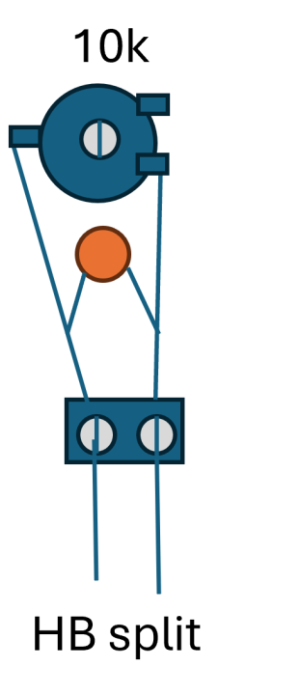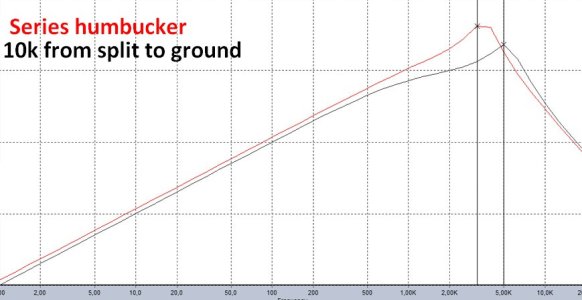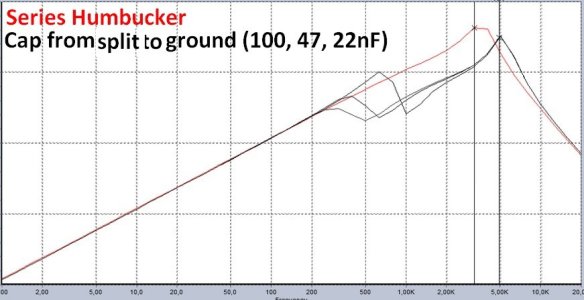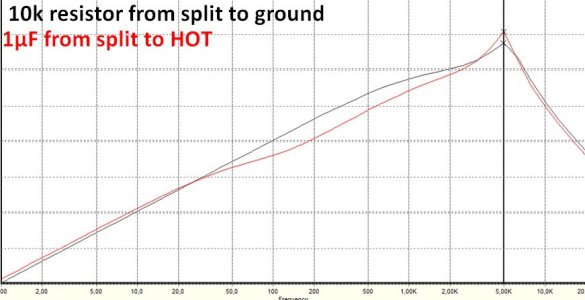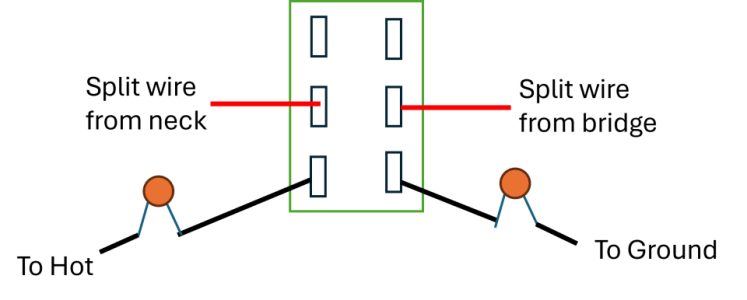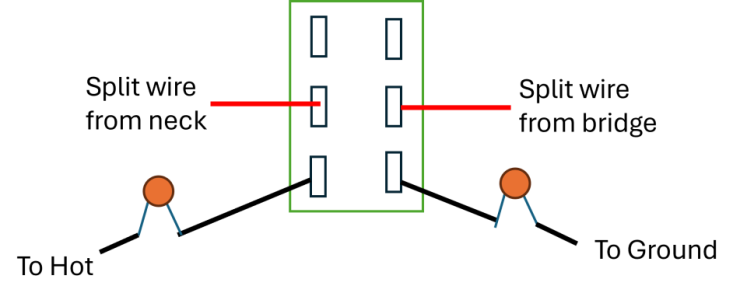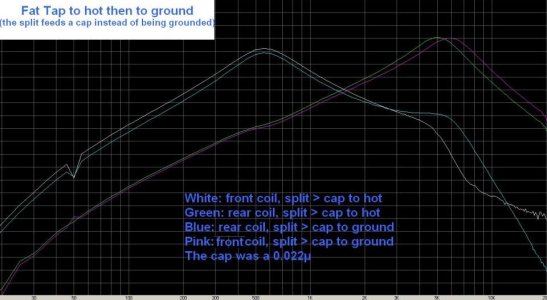freefrog - I'm immensely grateful but feel quite humbled by your knowledge - and my lack of it!
You're welcome, Andy. Always glad to help.
In your first diagram where you are showing what I have done with the trimpot, I assume the Y axis represents the volume / strength of signal. I'm surprised the volume doesn't show a greater drop off....but also, at least to my ears.....the higher the resistance...winding the trimpot from 0 - 10kohms....it feels like it's getting bassier, but that could just be how my ears interpret it....but the resonant peak seems to have moved from 3.5 to 5k? I assume the higher the frequency of the resonant peak, the more trebly the overall sound?
About volume: my 5spic sim mimics the electrical behaviour of coils submitted to a constant stimulus. Playing the pickup would aggravate the difference by sending transients to it.
About the EQing: yes, the resonant peak of the half split PU is higher pitched, translating one of the main differences between coils in series/humbucking mode and single coil/ split coil.
But as you can see, the resonant peak "sags" progressively beyond 500hz. A bit as if a tone control was lowered... and with a potential influence on the perceived volume.
In the second diagram the resonant peak of one of the same coil is in the 300 - 700hz range and hence you describing that as rolling the treble control completely off on one of the coils?
With a capacitor from split to ground, the first coil sounds as if it had a tone control completely turned off. The second coil keeps resonating normally at high frequency. My pic shows the combination of both, illustrating the Gibson "fat tap" principle (one coil promotes the bass and low mids, giving its fatness to the other).
In the last diagram, you have the much higher value capacitor but taking it to hot. And that has that higher peak which makes it brighter. I'm trying to understand why though? Also, if there is no drop in output, isn't it just going to sound like a more trebly humbucker, rather than sounding a bit single coil like? So I'd still have to have a resistor in there somewhere....but I don't know where?
The overall output drop in this case is not worse than with the 10k resistor but the pointier resonant peak might make the sound more realistic and more alive.
The high value capacitor in parallel with the coil almost totally bypasses it but not totally since it's a cap (which is nothing else than a frequency dependent resistor, to keep it simple). A lower value cap at the same place (from split to hot) would generate roughly the same kind of response than in pic 2, if memory serves me.
A resistor in SERIES with the cap would limit its action. The whole (resistor + cap in series) would be placed in parallel with the coil going from split to hot... If it was for me, I'd probably use a mini 10k trim pot for that... And I wouldn't hesitate to try the resistor alone in parallel with the second coil from split to hot.

If you could please explain, I'll try to mock up another diagram to see if it makes sense.
Hope it's clearer now. But what I've shared is just 5spice simulation meant to give "an idea" of what happens. As I said, the related experiments are too far in the past to be remembered by my old brain.
So IMHO, the best thing to do in such a case is to try different wirings with a few alligator clips. I always end doing that myself. Sometimes it sounds good, sometimes not. Depends on the specs of the gear used (including the location of coils under the strings). Which makes my sims not that useful finally. Reason why they were shared humbly as well. ;-)
Good luck in your experiments. Keep us informed.

FF
